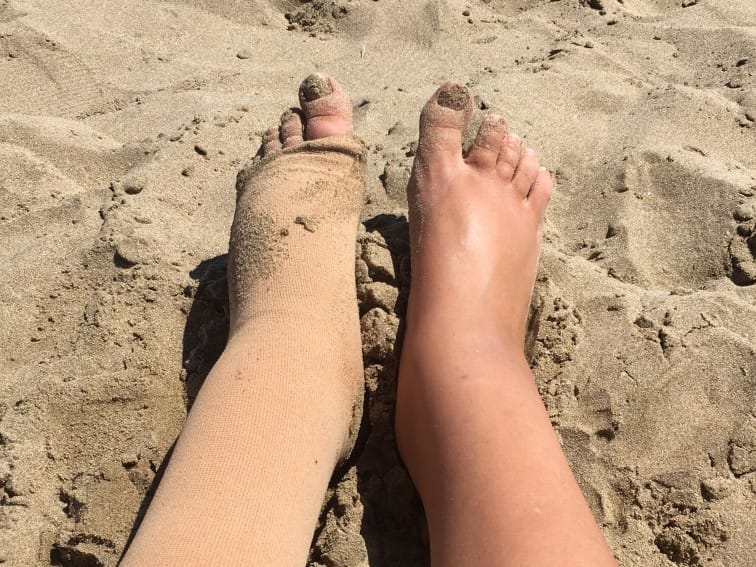Whether you or a loved one is suffering from Lymphedema, you may want to learn more about this medical condition and have a number of questions you want answered. In this article we aim to answer some of the most frequently asked questions regarding Lymphedema to help deepen your understanding of what it is, its symptoms, its treatment and more.
What is Lymphedema?
So first of all you might be wondering what Lymphedema actually is. Lymphedema is a medical condition which can be caused by a number of factors and happens when a build-up of fluid in soft body tissues is unable to flow properly through the body the way it should. Put more simply, your lymph nodes act as a drain like the one in your sink. When this drain becomes clogged, the fluid cannot drain. When the fluid cannot drain from the body, it can lead to the occurrence of swelling.

What are the Lymphedema symptoms?
The key tell-tale symptoms that you may be suffering from Lymphedema include:
- Swelling in a part of the body such as:
- Chest
- Breast
- Shoulder
- Arm Leg
- A feeling of heaviness or tightness
- Restricted range of motion
- Recurring infections
- Hardening and thickening of the skin (fibrosis)
Can anyone get Lymphedema?
Although anyone can suffer from Lymphedema, primary lymphedema often runs in families and there are a number of risk factors that can increase the likelihood of this condition occurring. Some risk factors include:
- Cancer
- Radiation treatment
- Parasites
- Old age
- Obesity
- Arthritis
- Hereditary
Statistics show primary lymphedema is rare and affects only 1 in 100,000 people. Secondary lymphedema affects around 1 in 1,000 people. It’s most common in women who have been treated for breast cancer.
Is Lymphedema curable?
Although there is no cure for Lymphedema, it is possible to control the main symptoms using specially designed techniques that help to minimise fluid build-up, reduce swelling and stimulate the flow of fluid throughout the body.
What is the treatment for Lymphedema?
Decongestive Lymphatic Therapy (DLT) is the recommended treatment for Lymphedema. It is important to remember that DLT is not a cure but is extremely effective in helping to control symptoms of Lymphedema.
DLT is the first phase of treatment and is very intense and time consuming as it may need to be completed on a daily basis, this phases involves four key components:
- Compression bandages
- Specialist massage techniques
- Skin care
- Exercise
The second phase of Lymphedema treatment is called the maintenance phases and can begin once the Lymphedema symptoms are under control. This phase can be completed by the patient themselves where they are encouraged to take over the care using silage techniques, exercise and wearing compression garments.
What are compression garments and how do they work?
Compression garments, also known as Lymphedema clothing, are especially designed to stimulate lymph drainage. These garments work by applying equal pressure to the affected area to help the lymphatic system work properly.
If you are unsure where to buy Lymphedema clothing, there are stores who stock a range of high-quality compression garments to assist with Lymphedema treatment.

